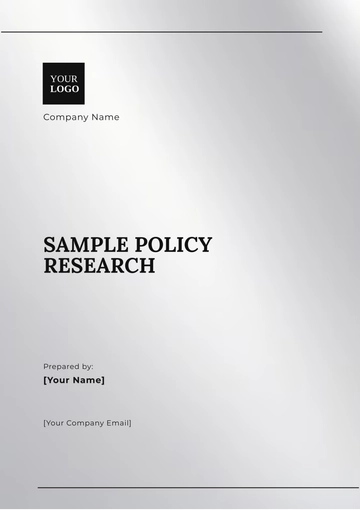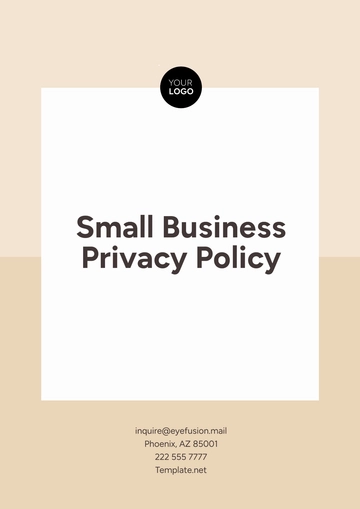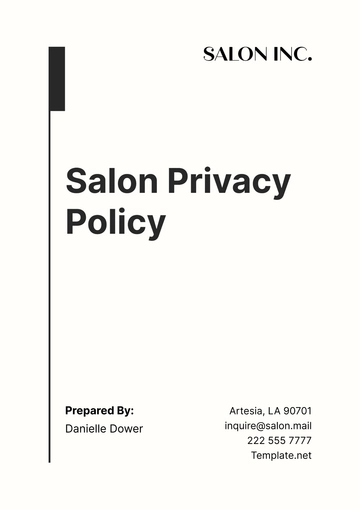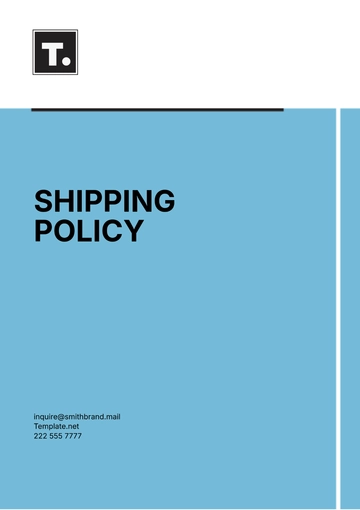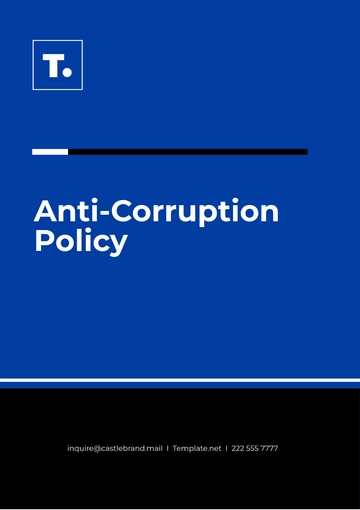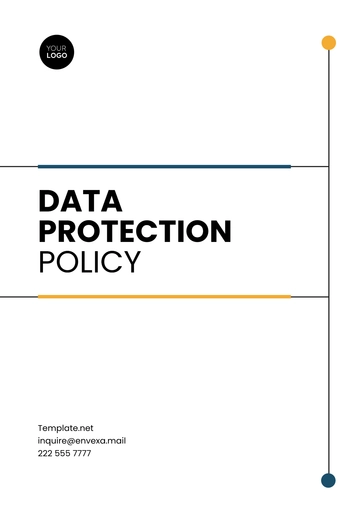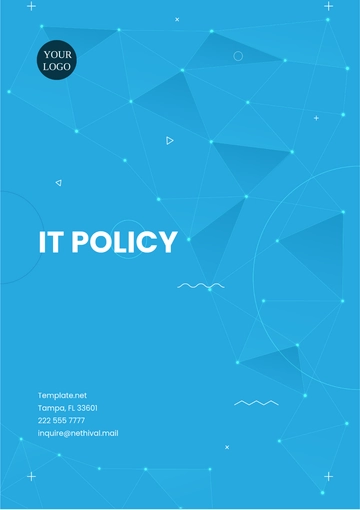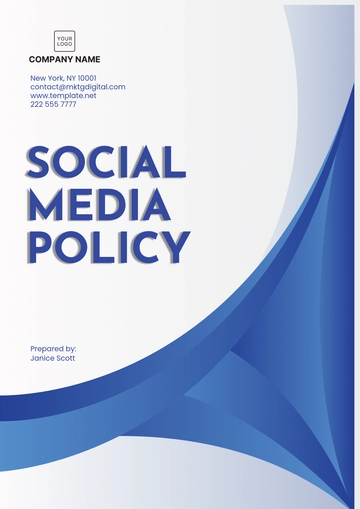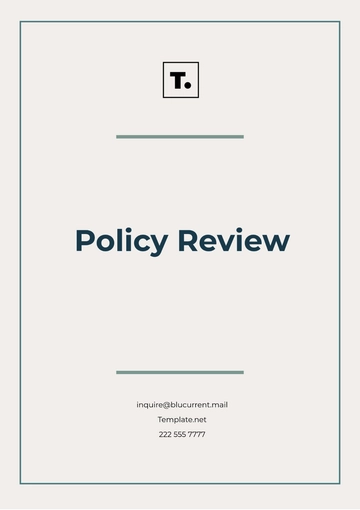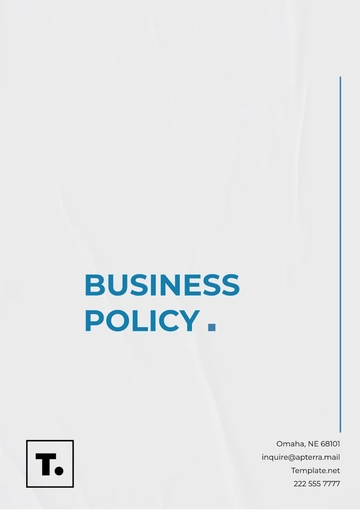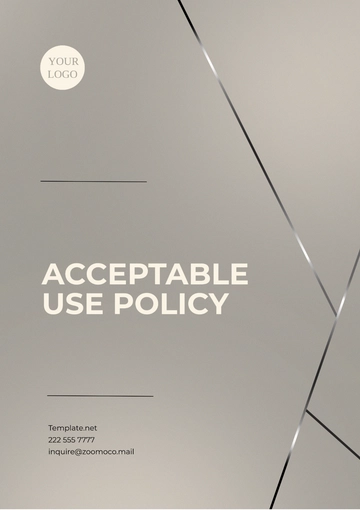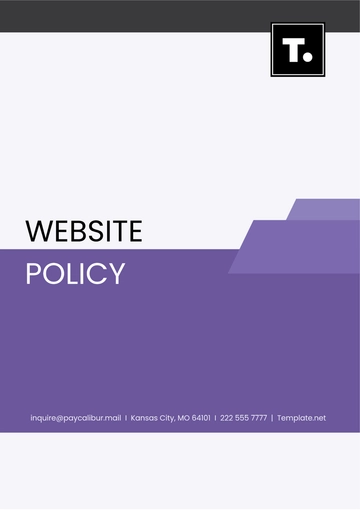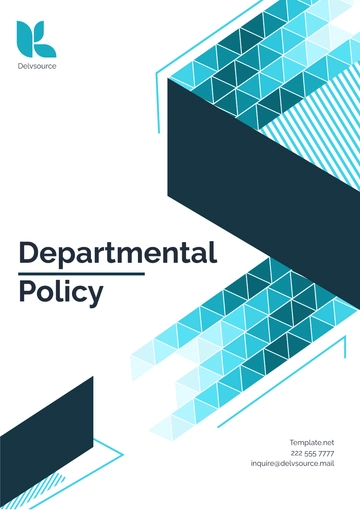Free Sales Document on Annual Commission Policy Reviews
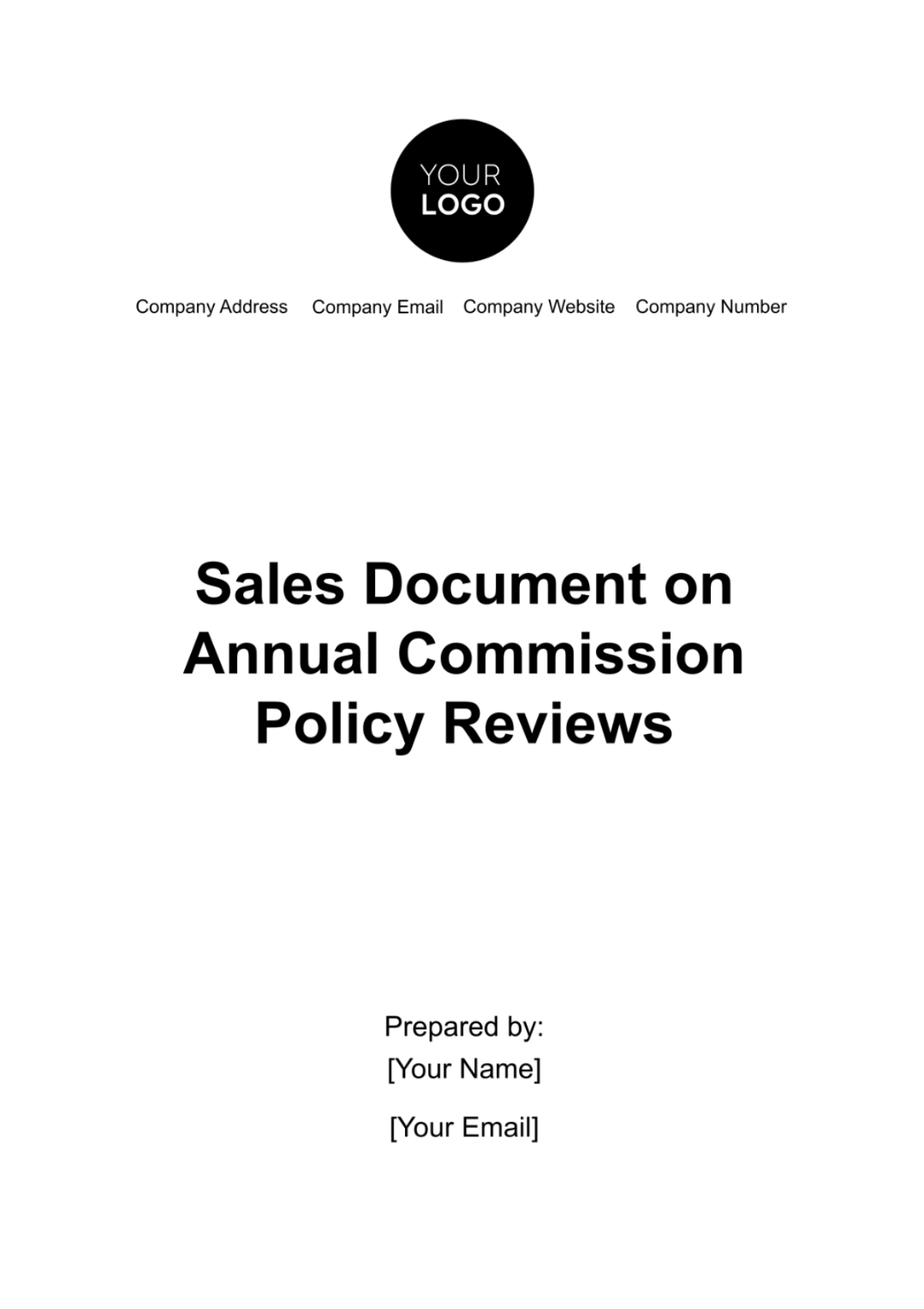
I. Purpose
The purpose of this document is to outline the process and importance of our annual commission policy reviews. This initiative is crucial for ensuring that our compensation strategies remain competitive, fair, and aligned with our overarching business goals. By conducting these reviews, we commit to maintaining an environment that motivates our sales force while also driving our organization towards its strategic objectives.
II. Importance of Commission Policies
A. Motivation and Engagement: Our commission policies are designed to directly link sales performance with rewards, thereby motivating our sales team to achieve and exceed their targets.
B. Alignment with Business Goals: These policies ensure that the efforts of our sales team are closely aligned with our business objectives, encouraging behaviors that contribute to our company's growth and success.
C. Market Competitiveness: To attract and retain top sales talent, our commission policies need to be competitive within our industry. This competitiveness is evaluated and adjusted through our annual review process.
D. Adaptability and Flexibility: In a rapidly changing market, the ability to adapt our commission structures ensures we remain agile and responsive to both external and internal shifts.
III. Overview of Commission Structure
Our commission structure is a critical component of our overall compensation plan, intended to incentivize our sales team to achieve and surpass set targets. It is structured to reward individual achievement, team collaboration, and the attainment of broader company goals. This balance ensures that while individual contributions are recognized, the importance of collective success is also emphasized.
A. Objectives
To provide a direct correlation between sales achievements and financial rewards, encouraging excellence in sales activities.
To align the interests of our sales team with our company’s strategic objectives, ensuring that every sale contributes to our overarching mission.
To ensure that the commission structure is perceived as fair, with clear guidelines on how commissions are calculated and distributed.
To allow for adjustments in response to market changes, business needs, and feedback from the sales team, maintaining relevance and competitiveness.
B. Components
Component | Description |
Base Salary | A fixed amount provided to sales employees, ensuring financial stability. |
Commission Rate | A percentage of the sales amount awarded to the employee for individual sales achievements. |
Bonus Incentives | Additional financial rewards for reaching or surpassing specific sales milestones or objectives. |
Team Performance | Rewards based on the collective achievements of the sales team, promoting teamwork. |
Special Recognitions | Acknowledgement and rewards for exceptional performance or contributions beyond direct sales. |
IV. Rationale for Annual Review
The annual review of our commission policies is a fundamental practice designed to ensure our compensation strategies remain aligned with our evolving business goals, competitive within the market, and fair to our employees. This process allows us to reflect on the effectiveness of our commission structure, identify areas for improvement, and make necessary adjustments to better motivate our sales team and drive business success. By regularly reviewing our policies, we can adapt to market changes, incorporate feedback from stakeholders, and maintain a transparent and rewarding compensation system that supports our strategic objectives and sales performance.
V. Scope of the Review
A. Criteria for Review
To ensure a comprehensive and effective review of our commission policies, we consider multiple criteria reflecting the performance, competitiveness, and fairness of our compensation strategies. Below is an overview followed by a detailed table outlining these criteria:
Criteria | Description |
Alignment with Business Goals | Evaluates how well the commission structure drives sales activities that support company objectives. |
Market Competitiveness | Assesses how our commission rates compare with industry standards and competitors. |
Sales Team Motivation | Measures the effectiveness of the commission structure in motivating sales staff to achieve and exceed targets. |
Fairness and Transparency | Examines the clarity of the commission policy and its perception of fairness among the sales team. |
Adaptability to Market Changes | Assesses the structure’s flexibility to adapt to changing market conditions and business needs. |
B. Stakeholders Involved
The annual review process involves a range of stakeholders to ensure a broad perspective and to incorporate feedback from all relevant parties.
Sales Representatives: Provide feedback on the motivational aspects of the current commission structure and its effectiveness in driving sales.
Sales Leadership: Offers insights into how well the commission policies align with strategic sales goals and team performance.
Human Resources (HR): Ensures that the commission policies adhere to legal standards and company policies on fairness and equity.
Executive Management: Assesses the commission structure’s alignment with overall business objectives and its impact on financial performance.
C. Timeline and Milestones
Milestone | Description | Timeframe |
Kick-Off Meeting | Official start of the review process, outlining goals and responsibilities. | Month 1 |
Data Collection | Gathering of sales performance data, market benchmarks, and stakeholder feedback. | Months 1-2 |
Analysis and Evaluation | Assessment of current commission policies against review criteria. | Months 2-3 |
Stakeholder Consultation | Meetings with involved stakeholders to discuss findings and propose adjustments. | Month 3 |
Finalization of Changes | Decision on adjustments to be made, based on analysis and feedback. | Month 4 |
Communication | Announcement of any changes to the commission policies to the sales team and other stakeholders. | Month 5 |
Implementation | Rollout of the updated commission structure, including any necessary training or adjustments. | Month 6 |
VI. Process for Policy Review
A. Data Collection and Analysis
In this initial step, we gather comprehensive data related to sales performance, current commission payouts, employee feedback on the commission structure, and any external factors that may influence our policies, such as changes in market dynamics or competitive practices. This data collection is crucial for an informed analysis, allowing us to evaluate the effectiveness, fairness, and competitiveness of our current commission policies. Analysis involves comparing actual sales outcomes to targets, assessing the motivational impact of the commission structure, and identifying trends or issues that may require adjustments. The goal is to ensure our commission policies effectively drive the desired sales behaviors and outcomes.
B. Consultation with Stakeholders
Following data analysis, we engage in a consultation process with key stakeholders. This involves structured meetings and forums where findings from the data analysis are presented and discussed. Stakeholders, including sales representatives, managers, HR, and executive leadership, are invited to share their perspectives and provide feedback on the current commission structure and proposed changes. This collaborative approach ensures that any adjustments to the commission policies are grounded in a comprehensive understanding of their potential impact across the organization.
C. Benchmarking against Industry Standards
Benchmarking is a critical part of our policy review process, where we compare our commission structures against those of competitors and industry standards. This involves researching industry reports, participating in compensation surveys, and sometimes engaging consultants with expertise in sales compensation. The objective is to ensure that our commission policies are not only effective in motivating our team but also competitive in the marketplace, helping us attract and retain top sales talent.
VII. Impact of Reviews on Commission Policies
A. Possible Outcomes
The annual review of our commission policies can lead to a variety of outcomes, depending on the findings from data analysis, stakeholder consultation, and benchmarking. Below are some possible outcomes:
Adjustments to Commission Rates: Modifying commission percentages to better align with market standards and business goals.
Introduction of New Bonus Incentives: Implementing additional bonuses for exceptional performance or specific achievements.
Changes in Payment Structures: Altering the balance between base salary and commission to better motivate sales behaviors.
Modifications to Performance Metrics: Refining the metrics used to evaluate sales success, ensuring they drive the right activities and outcomes.
Enhanced Transparency and Communication: Improving how commission policies are communicated to ensure clarity and understanding.
B. Implementation of Changes
Once changes to the commission policies have been finalized, a detailed implementation plan is developed. This plan addresses how the changes will be communicated, the timeline for implementation, and any support mechanisms, such as training or adjustments to sales tracking systems, that will be provided. The goal is to ensure that all sales personnel understand the new commission structure, how it affects them, and the rationale behind the changes, minimizing disruptions and maintaining sales team motivation and performance.
Transition Plans for Affected Personnel
Detailed information sessions and Q&A opportunities to explain the changes.
Training sessions on new policies or tools, if applicable.
A grace period during which sales personnel can adapt to the new structure with support from management.
Establishing channels for ongoing feedback on the new commission policies.
2. Standard Program for Any Changes
Phase | Activity | Timeline |
Pre-Implementation | Detailed communication of impending changes Training sessions scheduled | 1-2 months prior |
Implementation | Official rollout of new commission structure Support and guidance provided | Implementation month |
Post-Implementation | Feedback collection and evaluation Adjustment of policies as necessary | 1-3 months post |
VIII. Case Studies
A. Case Study 1: Adjustment to Commission Rates
Situation: During our annual commission policy review, we identified that our sales team's performance was not aligning as expected with strategic business objectives. Despite achieving individual sales targets, the broader strategic goals of the company were not being met. Data analysis suggested that the commission structure overly rewarded short-term sales at the expense of long-term customer relationships and value.
Action: We decided to adjust our commission rates to better balance short-term achievements with long-term business goals. This involved increasing the commission for sales involving long-term contracts and introducing bonuses for maintaining customer relationships. The changes were communicated through detailed sessions, and training was provided to help the sales team adapt their strategies.
Result: Within a year of implementing the new commission structure, we observed a significant improvement in the alignment of sales activities with strategic objectives. There was an increase in long-term contracts, and customer retention rates improved. The sales team reported that the new structure motivated them to pursue sales that were more beneficial to the company in the long run.
B. Case Study 2: Introduction of Team Performance Bonuses
Situation: Feedback collected from stakeholders indicated that while individual sales performance was high, team collaboration and cross-selling were not being maximized. This lack of coordination was seen as a missed opportunity to enhance customer value and drive additional revenue.
Action: To address this, we introduced a new component to our commission policy: team performance bonuses. These bonuses were designed to reward not just individual achievements but also the collective success of the sales team in reaching cross-selling targets and achieving strategic objectives. The rollout included comprehensive communication efforts and workshops to foster a team-oriented mindset.
Result: The introduction of team performance bonuses led to a marked increase in collaborative efforts among the sales team. Cross-selling numbers saw a significant rise, contributing to overall revenue growth. Feedback from the sales team was overwhelmingly positive, with many highlighting the enhanced team spirit and the satisfaction of contributing to shared goals.
- 100% Customizable, free editor
- Access 1 Million+ Templates, photo’s & graphics
- Download or share as a template
- Click and replace photos, graphics, text, backgrounds
- Resize, crop, AI write & more
- Access advanced editor
Streamline your policy evaluation process with the Sales Document on Annual Commission Policy Reviews Template from Template.net. Designed to be both editable and customizable, this template facilitates a thorough examination of your commission policies each year. Make it your own using our AI Editor tool, ensuring your commission strategies remain competitive and effective.
You may also like
- HR Policy
- Restaurant Policy
- Company Policy
- Accounting Policies and Procedures
- Website Policy
- Privacy Policy
- Safety Policy
- School Policy
- IT and Software Policy
- Law Firm Policy
- Construction Policy
- Interior Design Policy
- Travel Agency Policy
- Education Academic Policy
- Security Policy
- Real Estate Policy
- Expense Policy
- Software Policy
